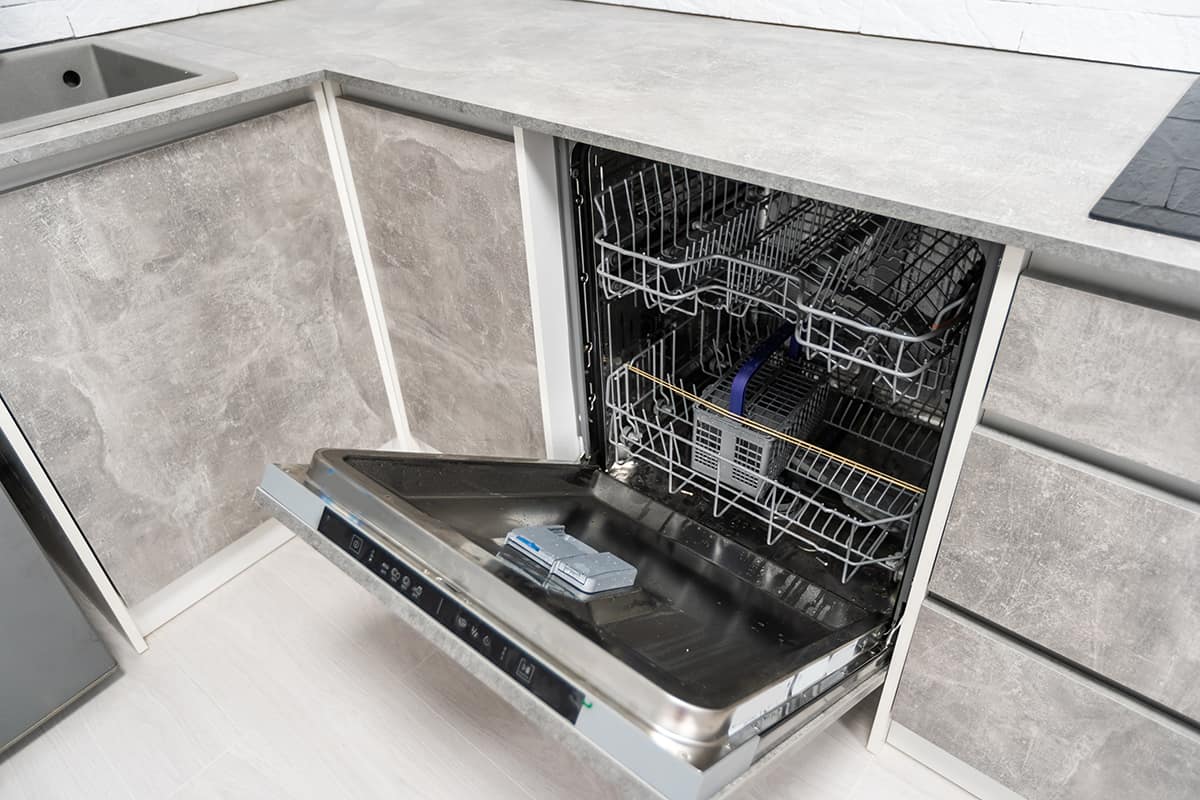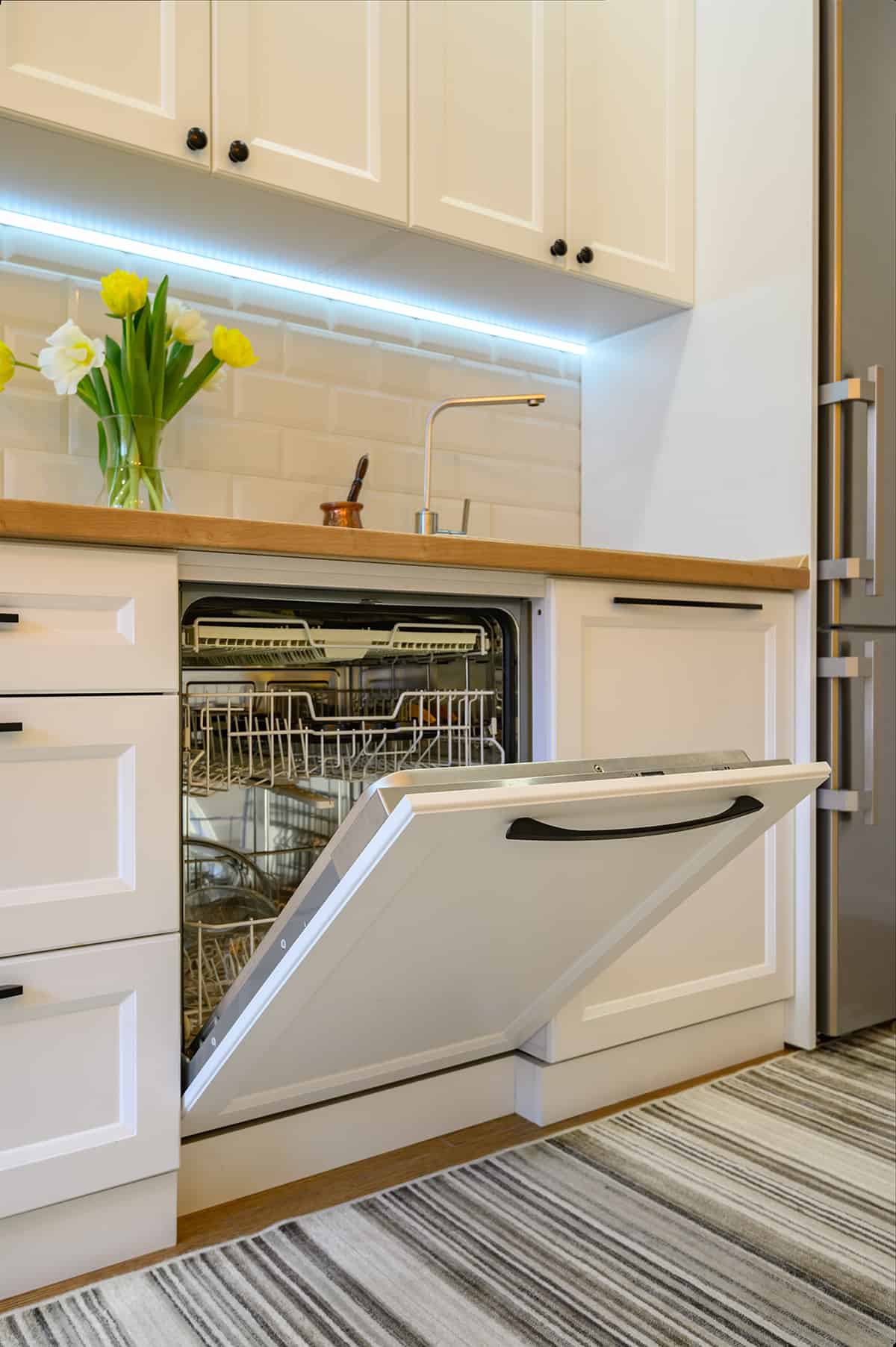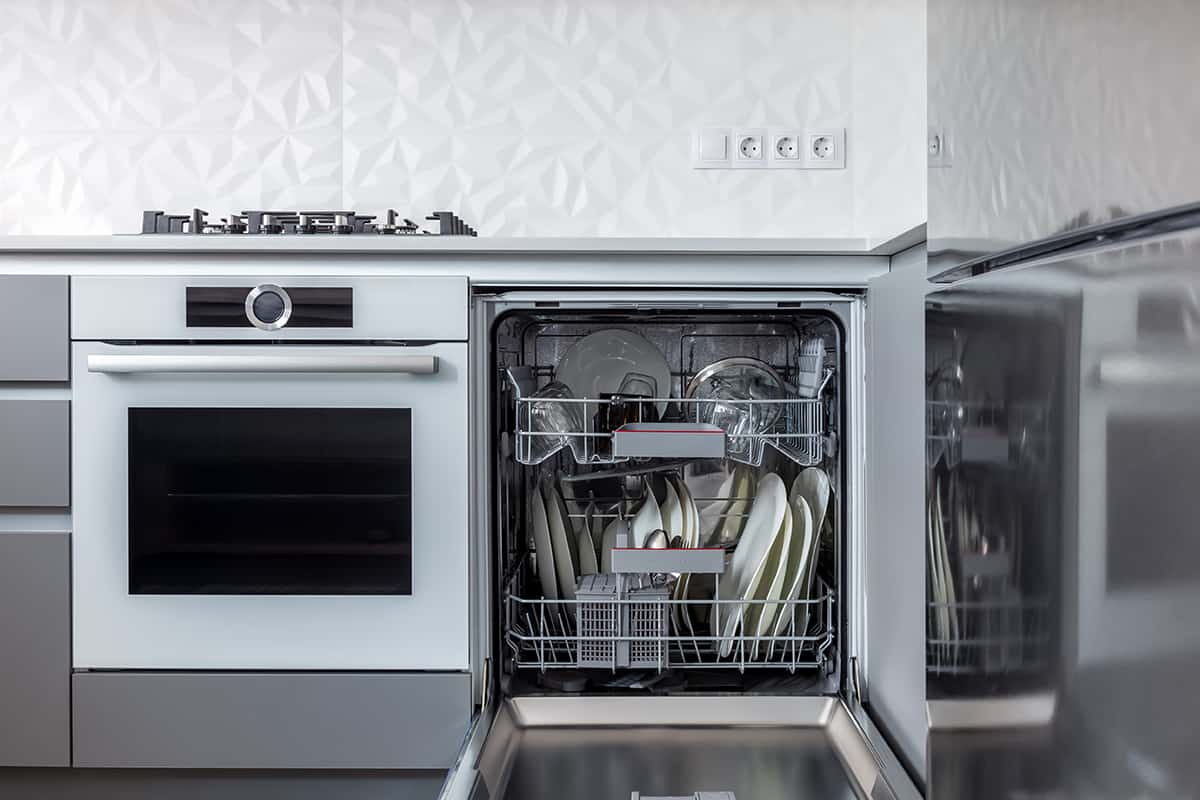Before buying a dishwasher, one of the first things you should do is figure out where you’re going to install it. Portable freestanding dishwashers can take up quite a bit of space—roughly 34 × 24 × 27 inches—so you might have to shift other appliances around to make room. But is it safe to place a dishwasher next to a stove?
Installing a dishwasher close to an oven is generally safe. However, you should allow for at least 2 inches of clearance between them to prevent your stove from damaging the dishwasher with its ambient heat.
In this guide, I’ll answer any lingering questions you may have about the placement of your dishwasher relative to a stove or oven.
Can A Dishwasher Be Next to the Stove?
Stoves, as you’re already aware, require gas or electricity to create heat, which you use to cook. You generally shouldn’t place anything in the immediate vicinity of a stove, but there are some exceptions to this rule.
Dishwashers are considered safe to be installed next to stoves. However, there should be at least 2 inches of clearance between the two appliances. That way, any ambient heat from the stove will pose virtually no physical risk to the dishwasher.
Now, would anyone recommend placing a dishwasher that is close to a stove? Probably not, especially if there’s another place you can put it.
However, since portable freestanding dishwashers can take up a lot of space, that might leave you with very few options on where to place them. And if that is the case, then you might want to consider getting a portable countertop unit, which takes up much less space and can be moved whenever you want.
Can a Dishwasher Be Next to an Oven?
Many stoves in the typical American household will have an oven. If this is the case in your home, then you should still keep the dishwasher at least 2 inches away from the stove-oven.
However, things are a bit different if you have a wall oven. Due to its design, a wall oven can only vent hot air through the front. That means anything that is directly next to, above, or below the appliance will suffer from the ambient heat. As such, your dishwasher—whether it’s a built-in, portable freestanding, or portable countertop model—should be at least 2 feet away from a wall oven at all times.
Is It a Good Idea to Install a Dishwasher So Close to a Stove/Oven?
While you can technically place a dishwasher near a stove or oven, provided you follow the previously recommended clearance distances, it’s not a very good idea. There are 3 reasons for this: safety, cleanliness, and aesthetics.
As we all know, water and fire are not the best of friends. Placing two appliances that are, in some way, polar opposites of each other might mean you’re putting the safety of your kitchen, the appliances, and yourself at risk. If anything were to go awry with the gas line, water line, or electrical outlet, it might cost a small fortune to fix everything.
Now, in terms of cleanliness, stoves aren’t usually known for keeping splashes and spills within a confined space. When your soups or sauces boil over, the resulting bubbles could fly several feet away from the pot and possibly land on or even in the dishwasher. While dishwashers are heat-resistant to some degree, they’re not designed to withstand scorching hot splashes of liquids.
Finally, the appearance of installing a dishwasher and a stove/oven side by side is, according to home designers, not a very practical idea. Generally speaking, your workstation should be separate from where you clean your dishes. That is why sinks are usually placed several feet away from stoves in the first place.
Where Is the Ideal Placement for a Dishwasher?

Now, if you can’t put your dishwasher next to a stove or oven, where can you place it? It might seem obvious, but your dishwasher should be placed next to or near your kitchen sink.
The main reason is that your dishwasher needs to connect to a water inlet valve, which will undoubtedly be located near your kitchen sink. However, you will also have to do this in order to connect the dishwasher to the garbage disposal located under your sink. If you don’t have a garbage disposal and if your dishwasher doesn’t come with one pre-installed, then you can simply connect it to the sewer line.
Since the dishwasher is located close to the sink and the water supply, you won’t have to use any extension hoses. The farther you install the dishwasher from the water valve, the more extension hoses you’ll need, the less pressurized the water becomes, which may cause the spray arm to fail in cleaning every item in every dishrack.
Another important aspect of your dishwasher’s location should be that it allows for freedom of movement. Opening the door and leaning down to insert or remove dishes from the dishwasher takes up quite a bit of space, and you will limit your range of movement if you place it next to a stove/oven or even a refrigerator.
Where Should I Put MY Dishwasher in a Small Kitchen?
Here’s where things can get a bit tricky. It can be a challenge to find the ideal placement for a dishwasher if you have very little real estate to play with. Apartment kitchens may only have about 100 square feet of floor space, with over half of that being used up by large appliances like stoves and refrigerators. So, where does this leave your dishwasher?
Again, while it’s not recommended that you install a dishwasher so close to a stove or oven, it’s technically possible and safe to do so. Just make sure that you provide a wide enough margin of space between the two appliances to prevent one from affecting the other.
There’s one kitchen accessory you can utilize to prevent heat from transferring from the stove to the dishwasher and vice versa—a heat shield. This is a thin sheet of fiberglass that insulates the sides of kitchen appliances and stops heat from going anywhere.
Placing a heat shield on the side of your stove might be the only solution to keep your dishwasher and stove from interfering with each other.
Please note that heat shields are not 100% foolproof. Over time, the heat shield might warp or deteriorate, and heat will move freely from one appliance to the other. However, as long as there is at least 2 inches of space between your dishwasher and stove, your appliances should remain technically safe.
Alternative Solutions for Small Kitchens
If you’re unsure of whether or not a 2-inch clearance space between a stove and a dishwasher is enough to maximize safety (I don’t blame you there), then you might want to consider these alternative solutions:
Install an integrated dishwasher

An integrated dishwasher is a dishwasher that you can install under your sink. It doesn’t take much space, and it can be hidden from view whenever it’s not in use. Also, because dishwashers can go underneath the sink, you don’t have to worry about them being too close to your stove.
Get a portable countertop dishwasher
I said it before, and I’ll say it again: a portable countertop dishwasher can be moved easily from one spot to another, allowing you to keep it away from wall ovens and stoves without much trouble.
Place the dishwasher in the corner
If you have the space for it, install your dishwasher in the corner of your kitchen. You might need extension hoses to hook the appliance to your garbage disposal and/or water inlet valve, but at least the machine will be several feet away from the stove.






